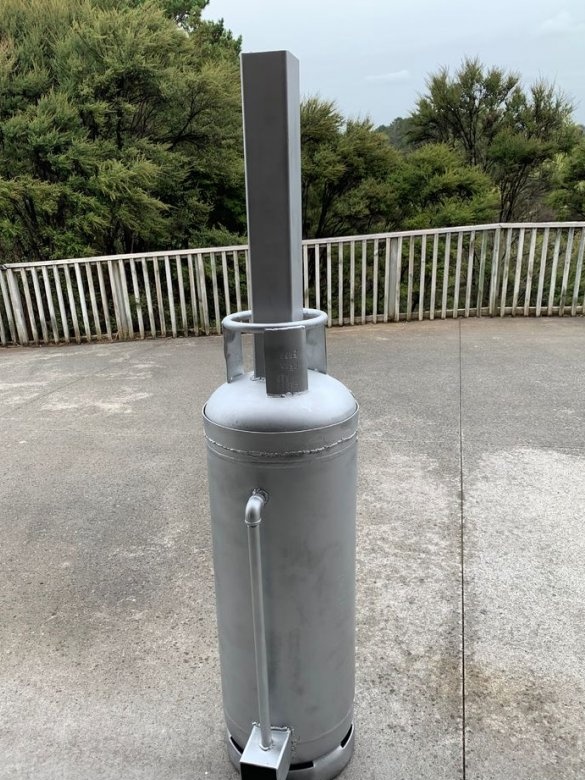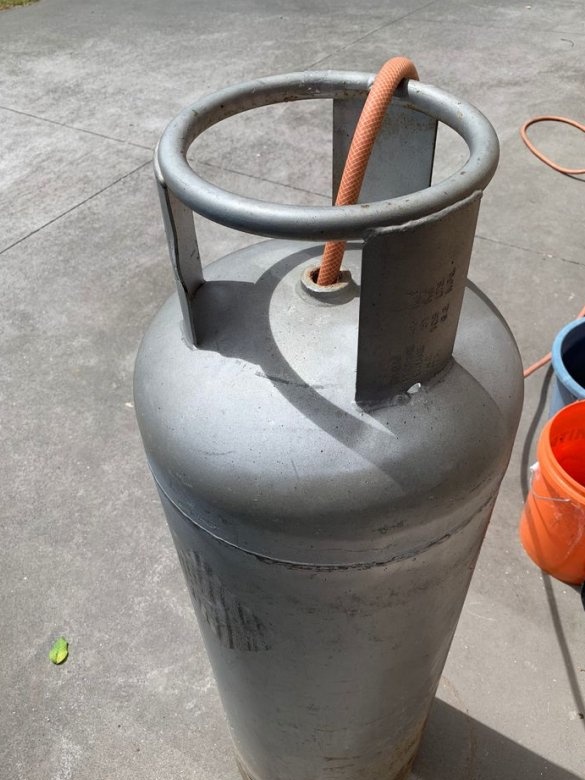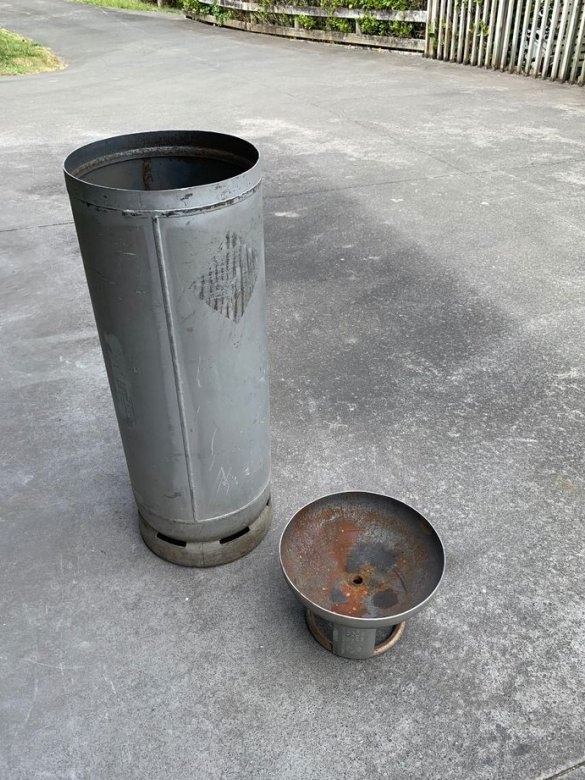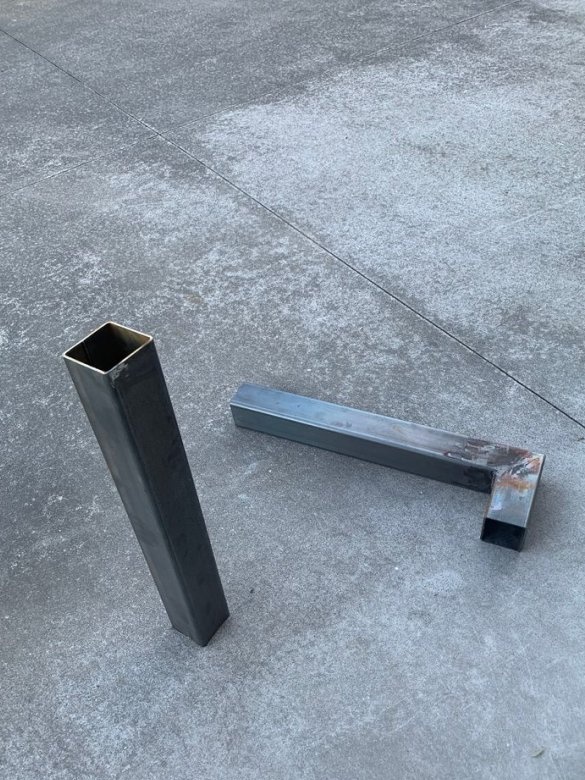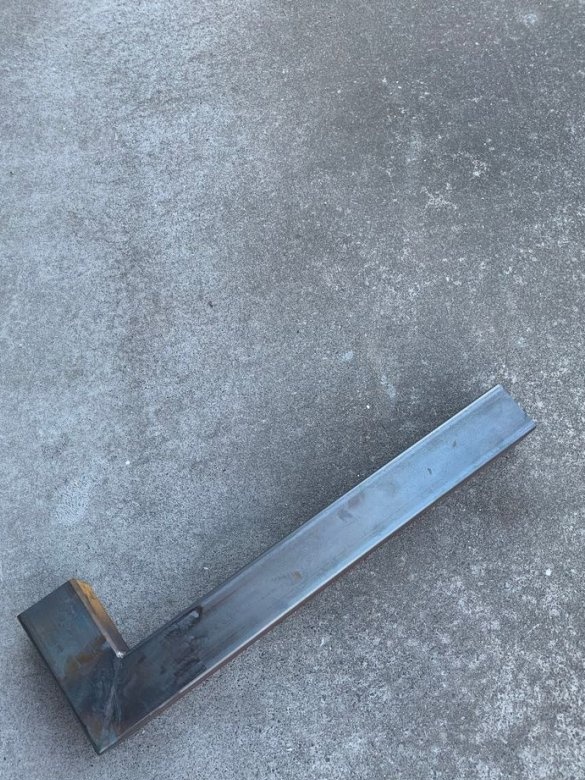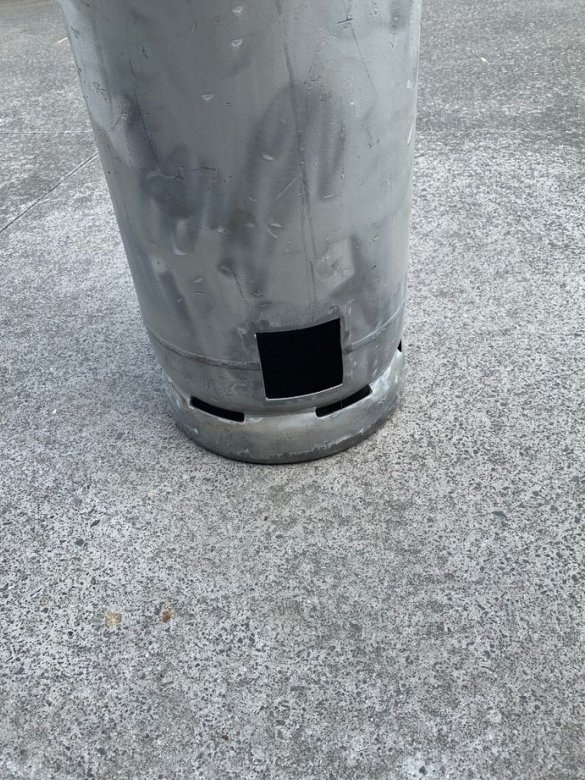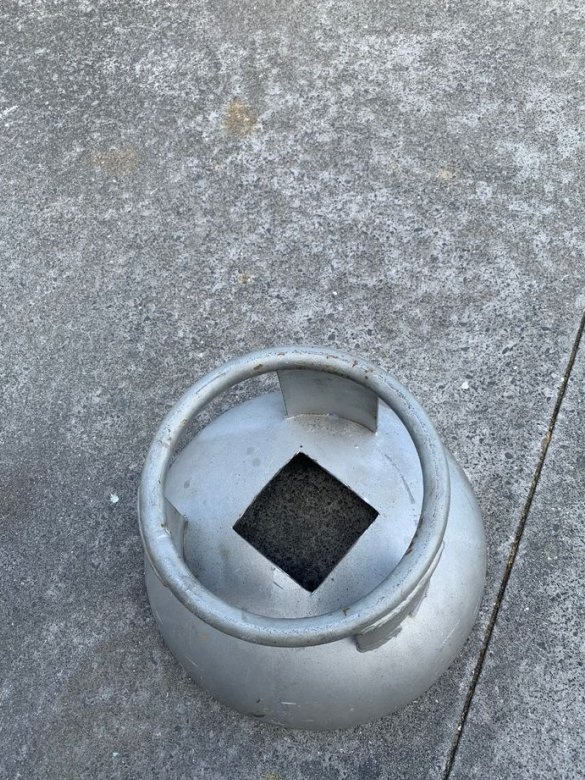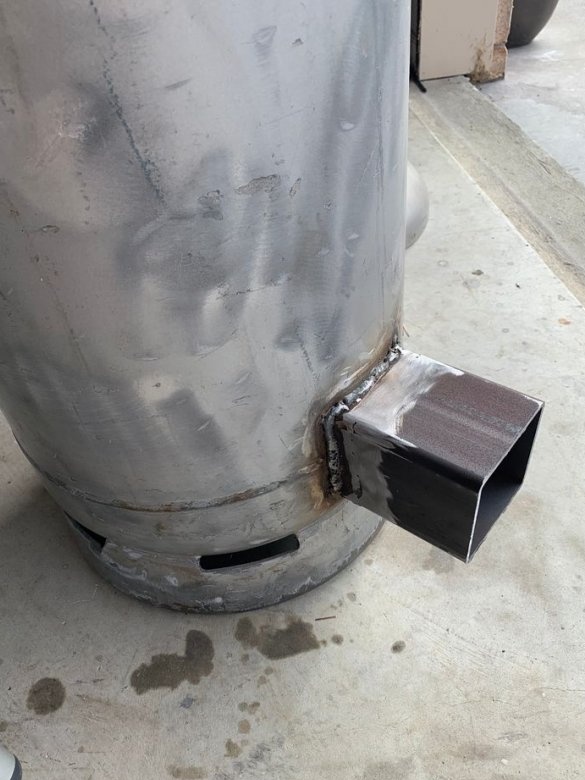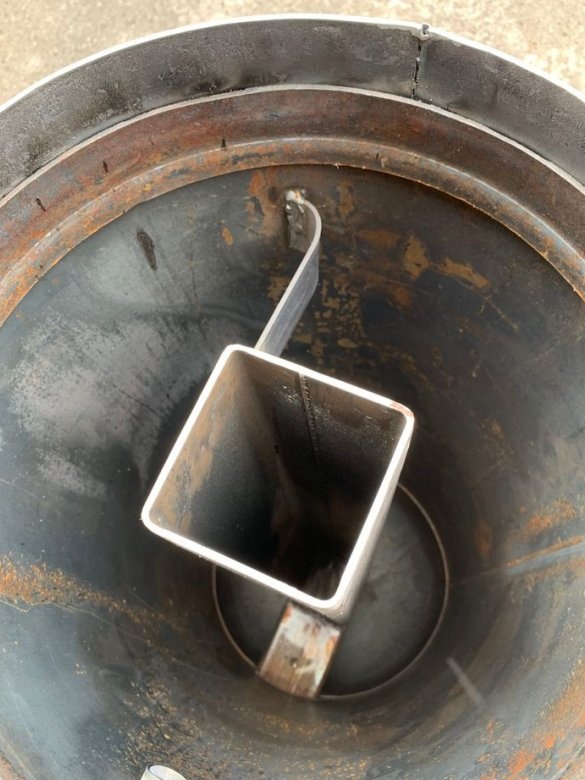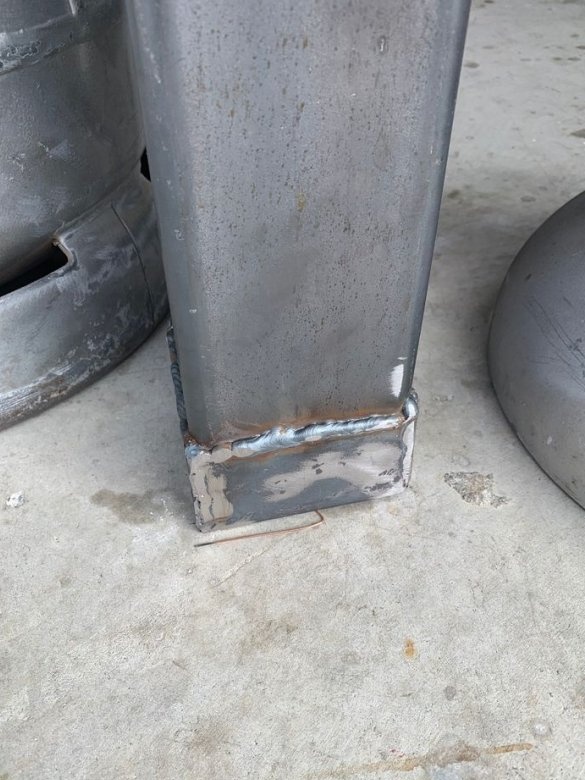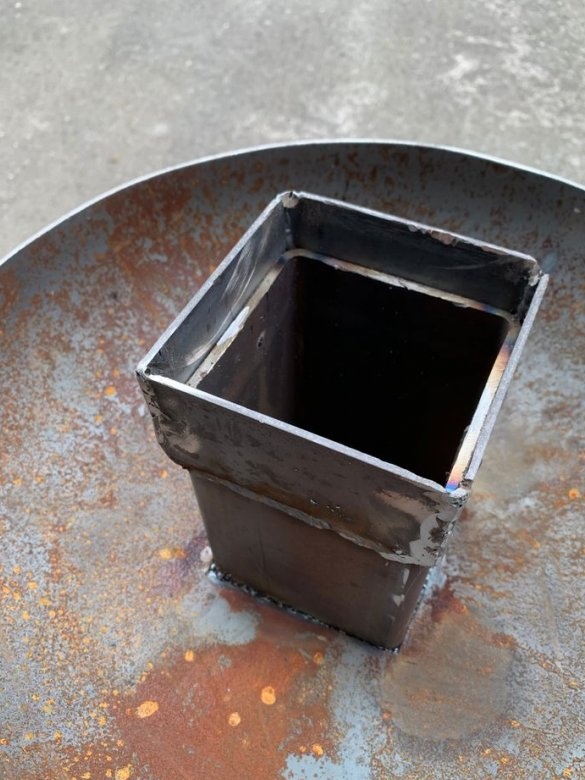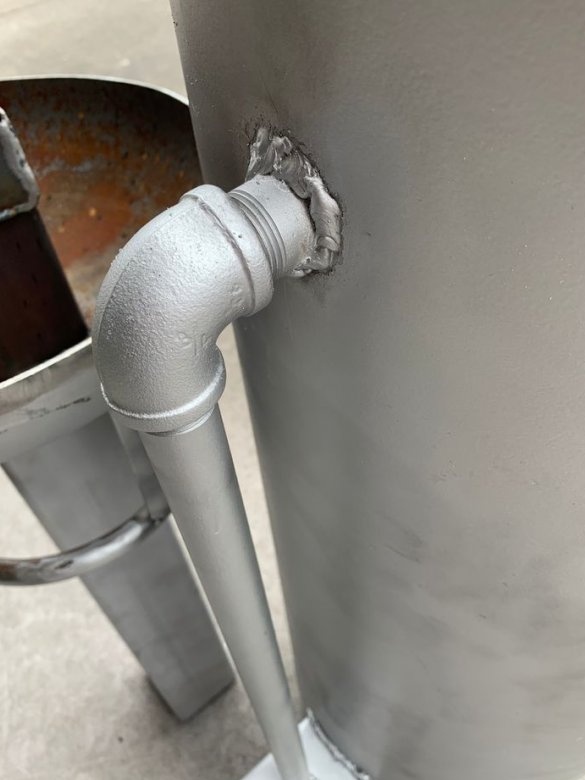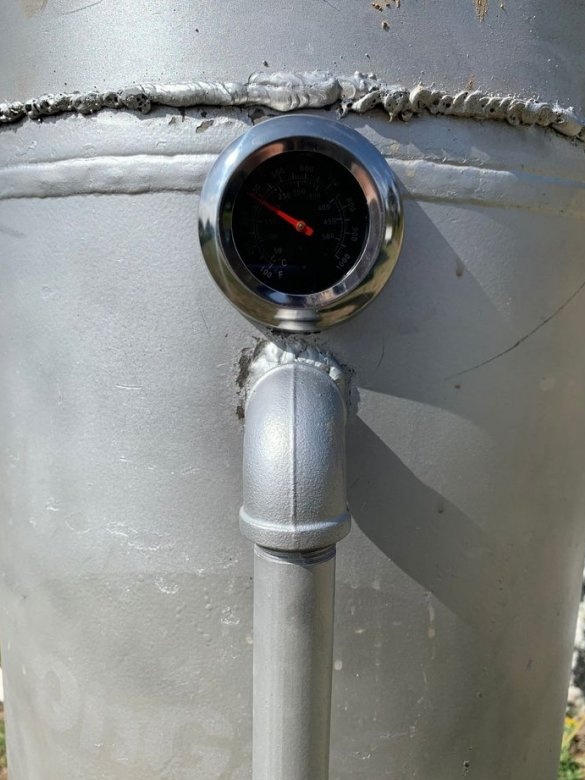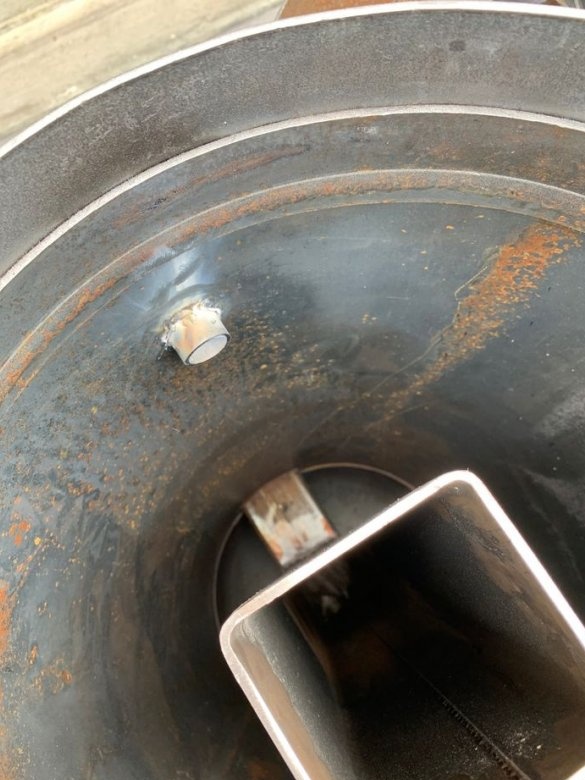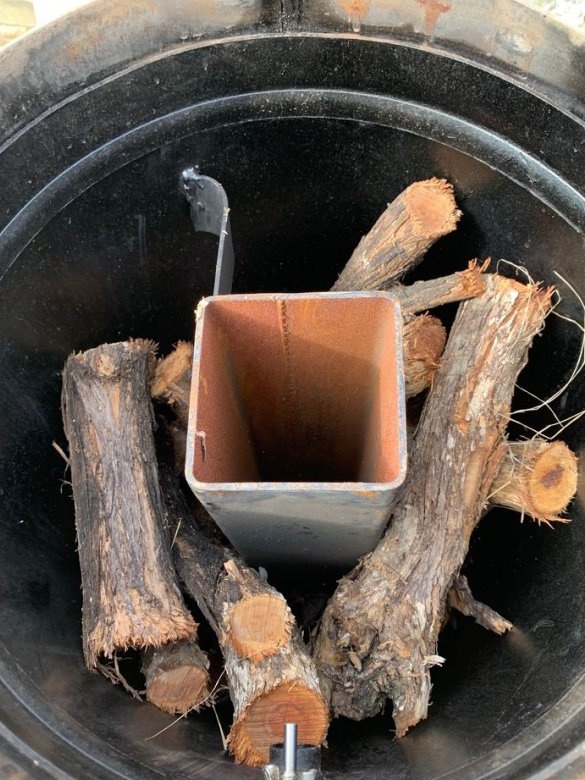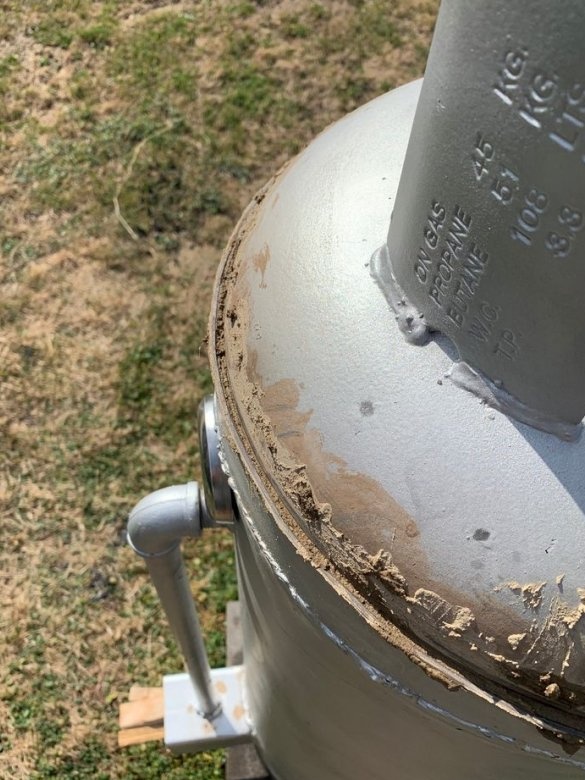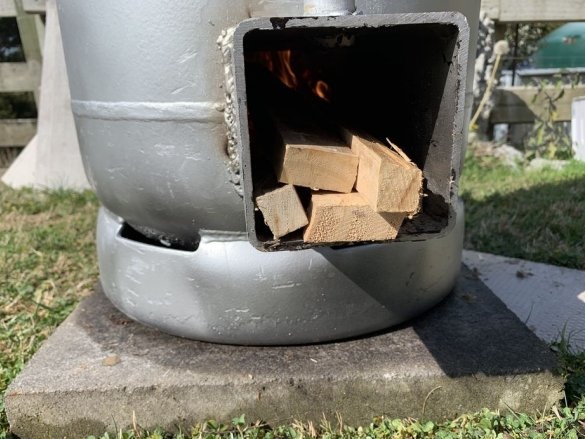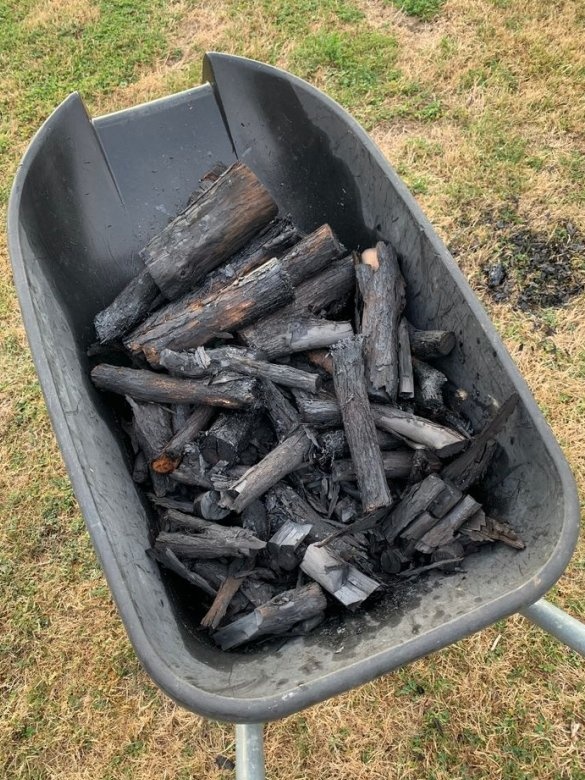A method of producing charcoal has been known since ancient times. Digging a hole. Firewood was stacked in it and set on fire. As soon as the fire flared up, the pit was closed by branches from above and covered with earth. After 1-2 days, the pit was dug up and charcoal was extracted from it.
In modern conditions, charcoal can be made, for example, in a stove "potbelly stove" or a metal barrel. But the Master went even further and decided to supplement the furnace with a pyrolysis gas afterburning system. Such furnaces are also called "rocket".
Let's watch a video with an example of a furnace.
Tools and materials:
-Propane cylinder;
-USHM;
-Welding machine;
-Water;
-Profile;
-Thermometer;
- The pipe is round;
-Fitting;
-Tube with thread;
-Paint;
-Clay;
Step one: balloon preparation
Before cutting the cylinder, it must be filled with water to prevent the explosion of the remaining gases. After gas displacement, you can safely cut the cylinder along the upper weld.
Step Two: Firebox
The furnace is made of a square profile pipe 100 * 100 mm. The shape of the furnace repeats the inverted letter G.
In the cylinder, the master cut a hole in the size of the pipe. The furnace is installed with a short end into the hole and welded. In the upper part, the master welded plates between the furnace and the cylinder for rigidity.
Step Three: Chimney
The chimney is also made of a profile pipe. In the lower part of the chimney around the perimeter, the master welded the plates to install it on the top of the furnace. The master cut a hole in the cut part of the container. Set the chimney on the firebox. I installed a cover with a hole on top. Welded the chimney to the lid.
Step Four: Thermometer and Gas Afterburning System
The afterburning system is a metal pipe boiled at one end to the upper part of the cylinder, and the second to the lower loading part of the furnace. Above the pipe, the master installed a thermometer.
At the end of welding, everything was painted with heat-resistant paint.
Step Five: Material Loading
Everything is ready and you can load the future charcoal into the furnace. Firewood is loaded into the space between the furnace and the walls of the container. A lid with a chimney is installed on top.The cracks between the cap and the bottle are covered with clay.
Then a fire is kindled in the firebox. As soon as the temperature rose to 200 ° C, gas began to be released, which rose up and part of it was sucked into the hole in the pipe. When the temperature reached 300 ° C, the gas began to burn, which is perfectly audible by the sound of the furnace.
The next day, after cooling the stove, the master took out firewood. Large chocks require additional processing, and all small ones turned into charcoal.

